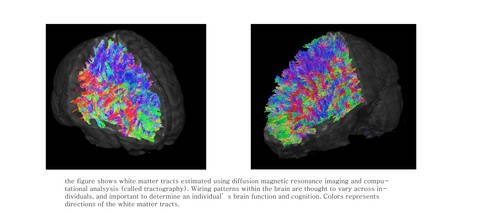Eating Disorders Raise Risk of Being Bullied
Prenatal Exposure to SSRIs May Be Linked to Changes in Infant Brain Development
 (more…)
(more…)Epilepsy Patients Have Small Increased Risk of Unnatural Death
Heart Attacks Less Common in Women, But More Likely To Be Fatal
MedicalResearch.com Interview with: Dr. Edina Cenko MD, PhD first author and Dr. Raffaele Bugiardini M.D. FESC, FAHA, Professor of Cardiovascular Medicine, Department of Experimental, Diagnostic...
Does Drug Industry Money Affect Cancer Prescriptions?
Prenatal SSRI Exposure Linked to Altered Infant Brain Development
Genetic Overlap Between Some Types of ALS and and Dementia
When Cousins Marry Mental Health Issues Increase
Sacubitril/Valsartan Reduces Physical and Social Limitations in Heart Failure Patients
Epigenetic DNA Variants Predictive of Coronary Artery Disease
Readmissions After Stent Surgery Common and Often Due to Co-Morbid Disease
MedicalResearch.com Interview with: [caption id="attachment_40933" align="alignleft" width="200"] Example of Open Cardiac Stent[/caption] Chun Shing Kwok, MBBS, MSc, BSc, MRCP(UK) Clinical Lecturer in Cardiology...
Reassessment of Tumor Sequencing For Patients with Potentially Inheritable Colon Cancer
Less Restrictive Marijuana Laws Linked To Reduced Opioid Prescriptions
Multifactorial Aspects of Sex Bias in Surgical Research
States with Medical Cannabis Dispensaries Had Bigger Drop in Opioid Prescriptions
 David Bradford, Ph.D.
Busbee Chair in Public Policy
Department of Public Administration and Policy
University of Georgia
Athens, GA 30602
MedicalResearch.com: What is the background for this study?
Response: To give you some background, in 2016, part of our research team (Bradford and Bradford) published the first study to directly examine the impact that medical cannabis laws (MCLs) may be having on prescription use. We used yearly physician-level Medicare Part D data, looked at nearly all prescription drugs used to treat 9 broad categories of illness/diagnoses, and found substantial reductions in prescriptions. We published a follow-up study in 2017, this time using data from Medicaid Fee-for-Service.
Again, we found significant substitution away from prescription medications. In both of these studies, pain was included in the list of conditions for which cannabis may be used in patients, and in both studies, pain prescriptions fell. One of the unanswered questions from both of those studies, though, was what *type* of pain medications were being reduced. From a public health standpoint, when we're worried about opioid overdose, it matters whether the substitution away from pain medications is coming from substitutions away from things like NSAIDs or whether there is substitution away from opioids.
(more…)
David Bradford, Ph.D.
Busbee Chair in Public Policy
Department of Public Administration and Policy
University of Georgia
Athens, GA 30602
MedicalResearch.com: What is the background for this study?
Response: To give you some background, in 2016, part of our research team (Bradford and Bradford) published the first study to directly examine the impact that medical cannabis laws (MCLs) may be having on prescription use. We used yearly physician-level Medicare Part D data, looked at nearly all prescription drugs used to treat 9 broad categories of illness/diagnoses, and found substantial reductions in prescriptions. We published a follow-up study in 2017, this time using data from Medicaid Fee-for-Service.
Again, we found significant substitution away from prescription medications. In both of these studies, pain was included in the list of conditions for which cannabis may be used in patients, and in both studies, pain prescriptions fell. One of the unanswered questions from both of those studies, though, was what *type* of pain medications were being reduced. From a public health standpoint, when we're worried about opioid overdose, it matters whether the substitution away from pain medications is coming from substitutions away from things like NSAIDs or whether there is substitution away from opioids.
(more…)Ankle Fracture: Close Casting Can Be Alternative To Surgery For Older Patients
MedicalResearch.com Interview with: David Keene DPhil NIHR Postdoctoral Research Fellow NDORMS Research Fellow in Trauma Rehabilitation Critical Care, Trauma and Rehabilitation Trials Group Nuffield Department...
Schizophrenia: Medications Reduce Psychotic Symptoms But Don’t Improve Real-Life Funtioning
Simple Screening Tool Predicts Parkinson’s Patients At Risk of Dementia
Everolimus plus Endocrine Therapy: Effective 1st Line Option for Postmenopausal Women with HR+/HER2- Advanced Breast Cancer
Sinus Infections: Majority of Antibiotic Prescriptions Longer Than Recommended
Obesity Linked to Increased Risk of Liver Cancer in Hepatitis B Patients
Study Finds Opportunities for Improvement to Pediatric Healthcare in Australia
Obesity Increased in Adults But Not Youth in Last Ten Years
MedicalResearch.com Interview with: Craig M. Hales, MD Cheryl D. Fryar, MSPH; Margaret D. Carroll, MSPH; David S. Freedman, PhD; Cynthia L. Ogden, PhD National Center for Health Statistics National Center for Chronic Disease Prevention and Health Promotion US...
USPSTF: Behavioral Counseling of Children and Teens to Prevent Skin Cancer Recommended
Readmissions After LVAD For Heart Failure High, Mostly For Non-Cardiac Causes
TBI Predisposes Kids To Attention Deficit Problems, Even Years After Injury
Topical Estrogen No Better Than Moisturizer for Postmenopausal Vaginal Dryness
Ophthalmology Consultation for Emergency Care at a University Hospital
Study Finds Adults Who Used Sunscreen Slightly More Likely To Get Sunburned
 Dawn Holman, MPH
Behavioral Scientist Division of Cancer Prevention and Control
CDC
MedicalResearch.com: What is the background for this study? What are the main findings?
Response: Sunburn at any age increases a person’s chances of developing skin cancer in the future. Using a combination of strategies including staying in the shade, wearing clothing that covers the arms and legs, wearing a hat with a wide brim, and wearing sunscreen (SPF 15+) on exposed skin can protect skin from sun damage and reduce risk of sunburn.
This study used national data to examine how often US adults used these sun protection strategies when outdoors in the sun for an hour or longer and how many US adults got sunburned in 2015.
Among adult women, staying in the shade and using sunscreen were the most common sun protection methods. About 40% of women regularly used these strategies. Women were less likely to wear a wide-brimmed hat (14%) or wear clothing covering their arms (11%) and legs (23%).
Among adult men, wearing pants or other clothing covering their legs and staying in the shade were the most common sun protection methods. Just over 30% of men regularly used these strategies. Men were less likely to use sunscreen (22%), wear a wide-brimmed hat (14%) or wear a shirt with long sleeves (13%).
About one-third of US adults got sunburned in 2015. Sunburn was even more common among certain groups. For example, about half of individuals with sun-sensitive skin and about half of adults aged 18-29 got sunburned.
Certain behaviors and health conditions were related to sunburn. For example, adults who used sunless tanning products to darken their skin, binge drank, engaged in aerobic activity, or were overweight or obese were more likely to get sunburned compared to other adults. Adults who regularly stayed in the shade when outdoors or avoided long periods of time in the sun were slightly less likely to get sunburned compared to other adults.
Adults who regularly used sunscreen were slightly more likely to get sunburned. (more…)
Dawn Holman, MPH
Behavioral Scientist Division of Cancer Prevention and Control
CDC
MedicalResearch.com: What is the background for this study? What are the main findings?
Response: Sunburn at any age increases a person’s chances of developing skin cancer in the future. Using a combination of strategies including staying in the shade, wearing clothing that covers the arms and legs, wearing a hat with a wide brim, and wearing sunscreen (SPF 15+) on exposed skin can protect skin from sun damage and reduce risk of sunburn.
This study used national data to examine how often US adults used these sun protection strategies when outdoors in the sun for an hour or longer and how many US adults got sunburned in 2015.
Among adult women, staying in the shade and using sunscreen were the most common sun protection methods. About 40% of women regularly used these strategies. Women were less likely to wear a wide-brimmed hat (14%) or wear clothing covering their arms (11%) and legs (23%).
Among adult men, wearing pants or other clothing covering their legs and staying in the shade were the most common sun protection methods. Just over 30% of men regularly used these strategies. Men were less likely to use sunscreen (22%), wear a wide-brimmed hat (14%) or wear a shirt with long sleeves (13%).
About one-third of US adults got sunburned in 2015. Sunburn was even more common among certain groups. For example, about half of individuals with sun-sensitive skin and about half of adults aged 18-29 got sunburned.
Certain behaviors and health conditions were related to sunburn. For example, adults who used sunless tanning products to darken their skin, binge drank, engaged in aerobic activity, or were overweight or obese were more likely to get sunburned compared to other adults. Adults who regularly stayed in the shade when outdoors or avoided long periods of time in the sun were slightly less likely to get sunburned compared to other adults.
Adults who regularly used sunscreen were slightly more likely to get sunburned. (more…)